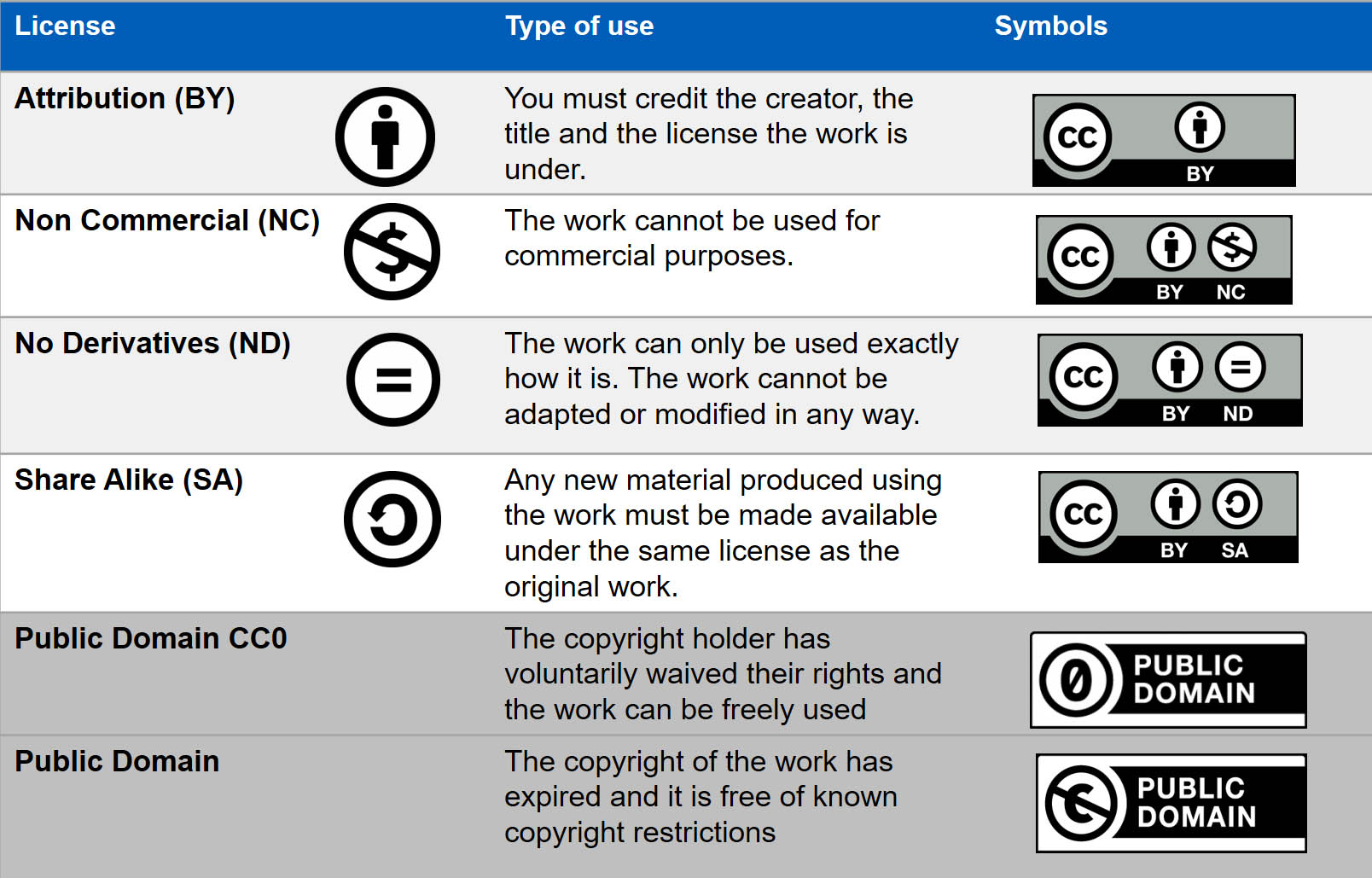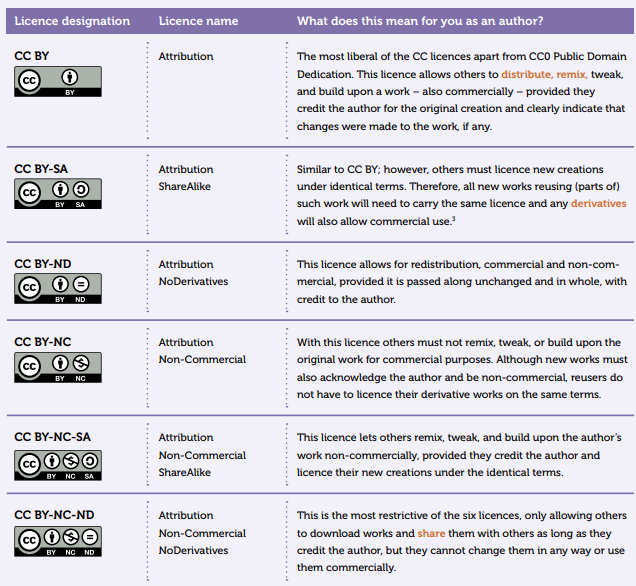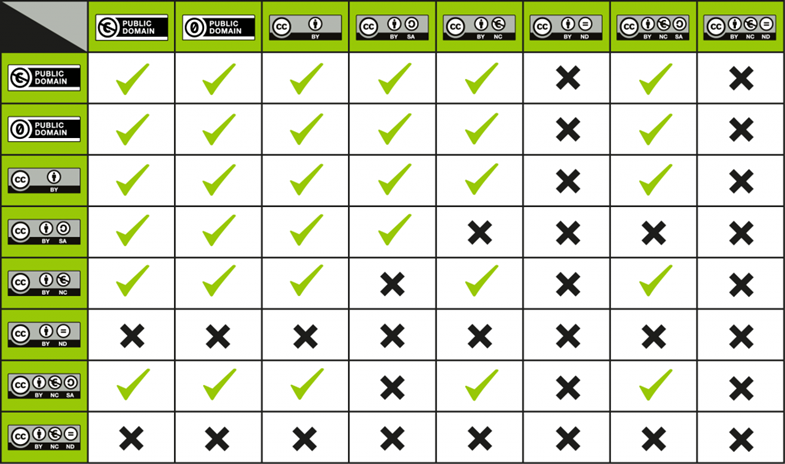7 Understanding Open Licences
Before you start planning your project, you will need to ensure you understand copyright considerations for OER and open texts and how these differ from other types of educational materials. This includes understanding how open licences like Creative Commons licences work.
What is an Open Licence?
In copyright terms, a licence specifies what you can and can’t do with a copyrighted work such as an image, video or written text. Licences are usually very restrictive, prohibiting copying or redistribution except in a few special circumstances.
An open licence grants rights to access, reuse, and redistribute a work with few or no restrictions.
For example, an image on a website made available under an open licence would be free for anyone to:
- print out and share
- publish on another website or in print
- make alterations or additions.
There are many forms of open licences, the most common of which is a Creative Commons licence.
What is a Creative Commons Licence?
Creative Commons is a set of standardised licence features used to license copyrighted works (including music, artistic, literary and video works) for public use. Creative Commons works are free to use provided the licence terms are followed.

These conditions can be combined to form the six Creative Commons licences (CC0 is not considered a true CC licence). See below:

You can read more about how each CC licence works on the Licence Deeds.
Note: UniSQ Library does not support the Creative Commons licences that include the – ND (NoDerivatives) restriction as content under this licence cannot be changed.
Which Licence Works for You?
Follow the steps in this Licence Chooser to select the appropriate licence for your work. The Licence Chooser provides a fast, step-by-step approach to selecting a licence for your work.
Choosing a Creative Commons Licence
When planning for your publication you will have considered what Creative Commons licence you want to apply to your finished work. As you prepare your manuscript, ensure that you understand the licence requirements of all third-party resources that you intend to use.
OER are meant to be flexible and allow for maximum dissemination. When choosing a licence, consider the rights you want to grant future users.
- You can learn more about the spectrum of licences offered by the Creative Commons in their Licences and Examples guide.
- Some funding agencies require the use of a specific licence when creating OER. If you receive funding, be sure to check the funding policy requirements.
- The open content you use in your work can sometimes dictate the licence in which the work will be distributed under.
- Attribute all content.
Watch: Creative Commons licence explained [5:32 mins].
Compatibility of Licences
In an ideal world, you would always be able to find resources with the most open licences. However, you will be more likely to deal with resources with different licences. This can be complicated as not all CC licences are compatible. For example, you cannot create a remix using works with a CC BY-SA licence, and a CC BY-NC-SA licence since both require the remixed work to be released under the same licence. The following chart can be used to help determine if resources with different licences are compatible.

Where Can I Access Support?
Please contact the OEP team with any questions you may have regarding Creative Commons licensing.
Creative Commons FAQs
Have a question about Creative Commons licences? Browse through this extensive list of frequently asked questions.
Chapter Attribution
This chapter is adapted in parts from:
- ‘Understand the Basics of Creative Commons Licensing‘ in Open Educational Resources Collective Publishing Workflow by Council of Australian University Librarians, licensed under a CC BY 4.0 licence.
- RMIT Open Publishing Toolkit for Authors by RMIT University, licensed under a CC BY-NC 4.0 licence.

